The image makers experiment with subtraction, cutting, assembling and manipulation, to give shape to the contemporary and new ways of looking at, perceiving and imagining reality and photography.
What are we looking at? A legitimate question for those who have not stopped asking it, in an age that effortlessly modifies images, bodies and the representation of reality. We're used to Lady Gaga's chameleon-like extravagances, but the metamorphic ones of image-makers like Inez & Vinoodh, with their early and passionate experimentation with the potential of digital, do more than just add legs, distort bodies and force the boundaries of photography. They reveal deception, along with new ways of imagining reality and photography that does not aim to reproduce but to create. Constructing, continuing to use subtraction, cutting, assemblage and manipulation to shape the contemporary, with the wide spectrum of visions and experiments of the protagonists of the group show The Constructed Image at The Ravestijn Gallery in Amsterdam. 18 Distinct voices for a chorus of curious and provocative approaches to contemporary photography, in the focus of Jasper Bode and Narda Van 't Veer, well before they founded the gallery to share them and use its space as a territory of encounter and comparison, for new associations and other perspectives. A constructed exhibition, on top of the images it hosts and this signalling that runs through them.
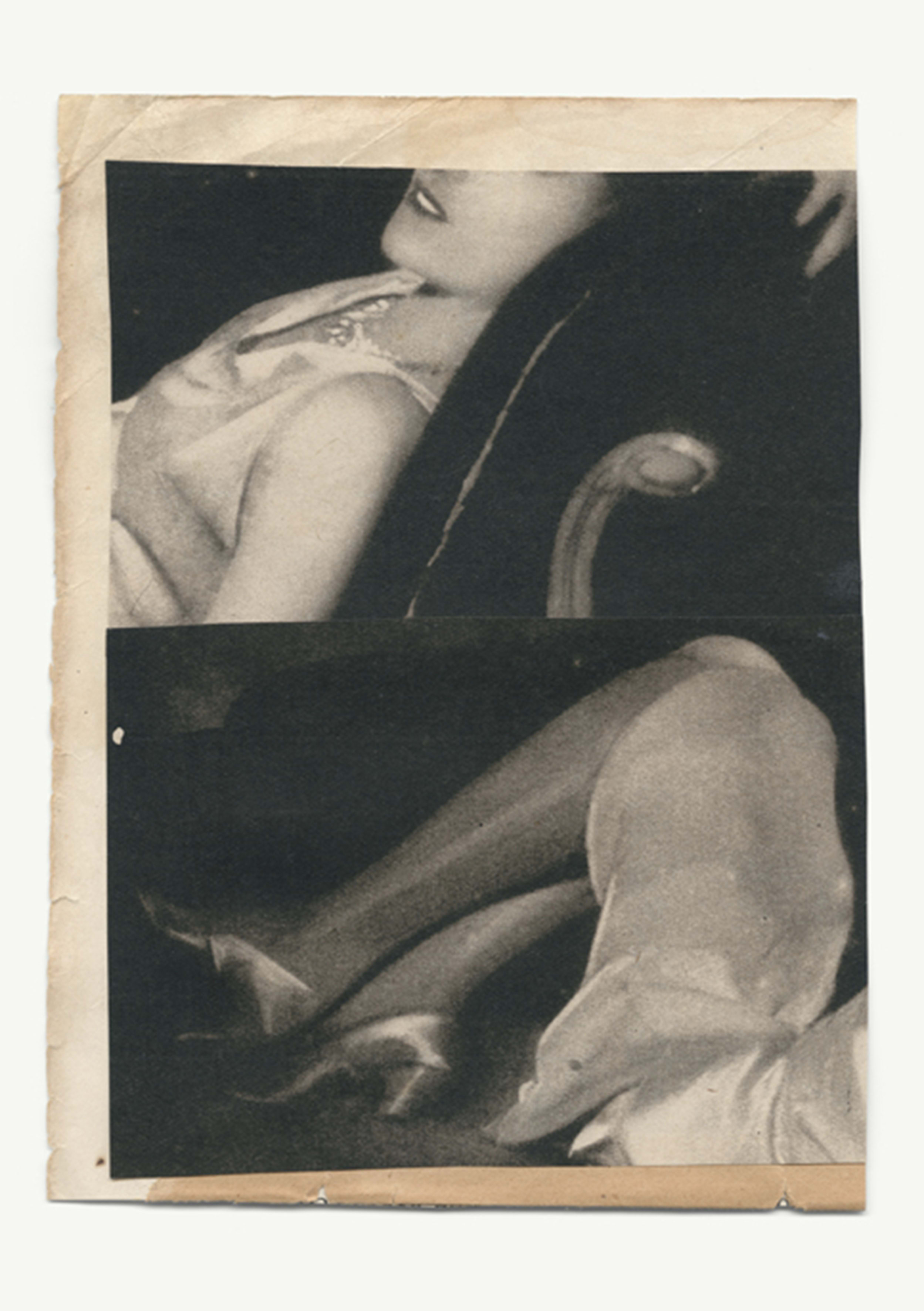
Single Cuts 48, 2014 © Katrien de Blauwer / courtesy The Ravestijn Gallery
Cuts, details, subtraction
The oldest practices of photography, in the hands of skilled visionaries, become sharp tools for looking at the habits of the visible, the most intriguing corners of the imaginary and the most hidden corners of the contemporary from other perspectives. New challenges, taken up by cutting artists such as the Flemish Katrien de Blauwer, with the appropriation of magazine photographs from the 1920s-60s, divided in two and recomposed, reversing the order of the original image, together with the perspective on the body and the space it inhabits. Dynamic recombinations, like the central cut of the frame of films ripped off in slow motion or the jump cut that Jean-Luc Godard began to use in À bout de souffle. They are as dynamic as the compositions of the German artist Martina Sauter, who juxtaposes the still images of characters and atmospheres from films and videos, heavily cropped and grainy, with the real space photographed with the definition of a 35 mm camera, clearly separated by doors, windows and frames that reveal the reality of the constructed image to the eye. In both cases the bodies lose their heads and a well-defined identity, to reconfigure ideas about social constructions, gender roles and identity.
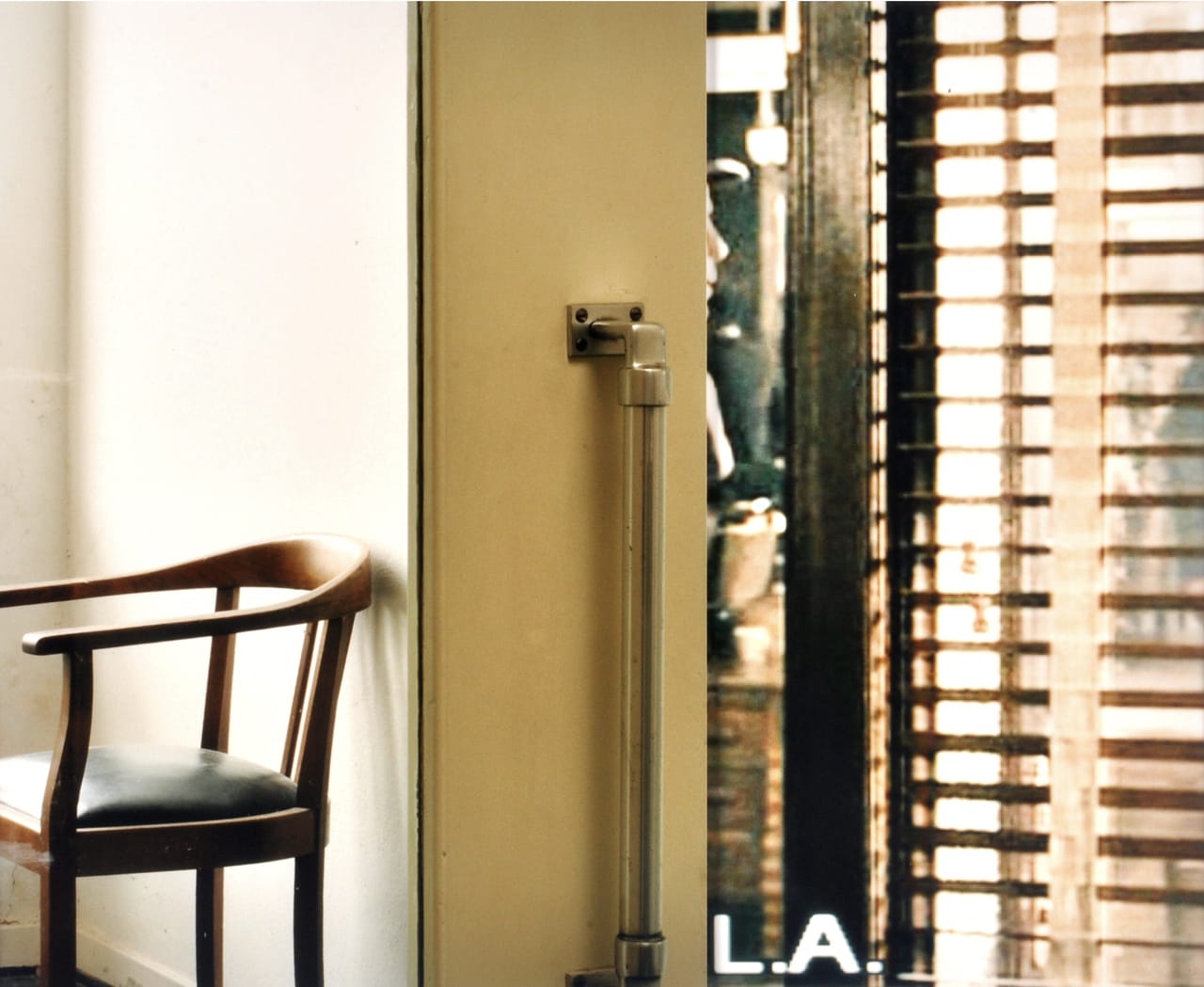
L.A., 2012, © Martina Sauter / courtesy The Ravestijn Gallery
Also shared by British artist K Young, cutting up found photographic material, using editing, reframing, splicing, layering and juxtaposition, for analogue collages, re-photographed alongside the new narrative of the original photographs, absent bodies and visual spaces, redefined along with their temporal dimensions. In a completely different way, feet, hands, veiled and unveiled legs, which emerge from curtains with Drape by Eva Stenram, do not merely remove the female body from view. They reconfigure the staging of seduction and the object of desire, along with the boundary between public and private, representation and perception. Digitally manipulating the bodies of pin-ups from negatives and clippings from the men-only magazine Cavalcata, the Swedish artist creates new images, drawing on Dada techniques, surrealist fragmentations and the visual language of Pop Art, like many of her colleagues. Dutch artist Ruth van Beek's kinetic photo collages, cutting, folding and painting images from books and magazines from the 50s and 70s, play with the material of the image and the boundaries of photography, drawing the eye to the object she is showing, knowing full well that identifying it requires a somersault of the imagination. Recycle (Prelude) by Jean-Francois Lepage, etches, cuts or draws over the original film and aesthetics of the Polaroid 8x10 colorgraph 891, with experimental interventions that dilate the boundaries of his photography, with a new harmonious and disturbing narrative.
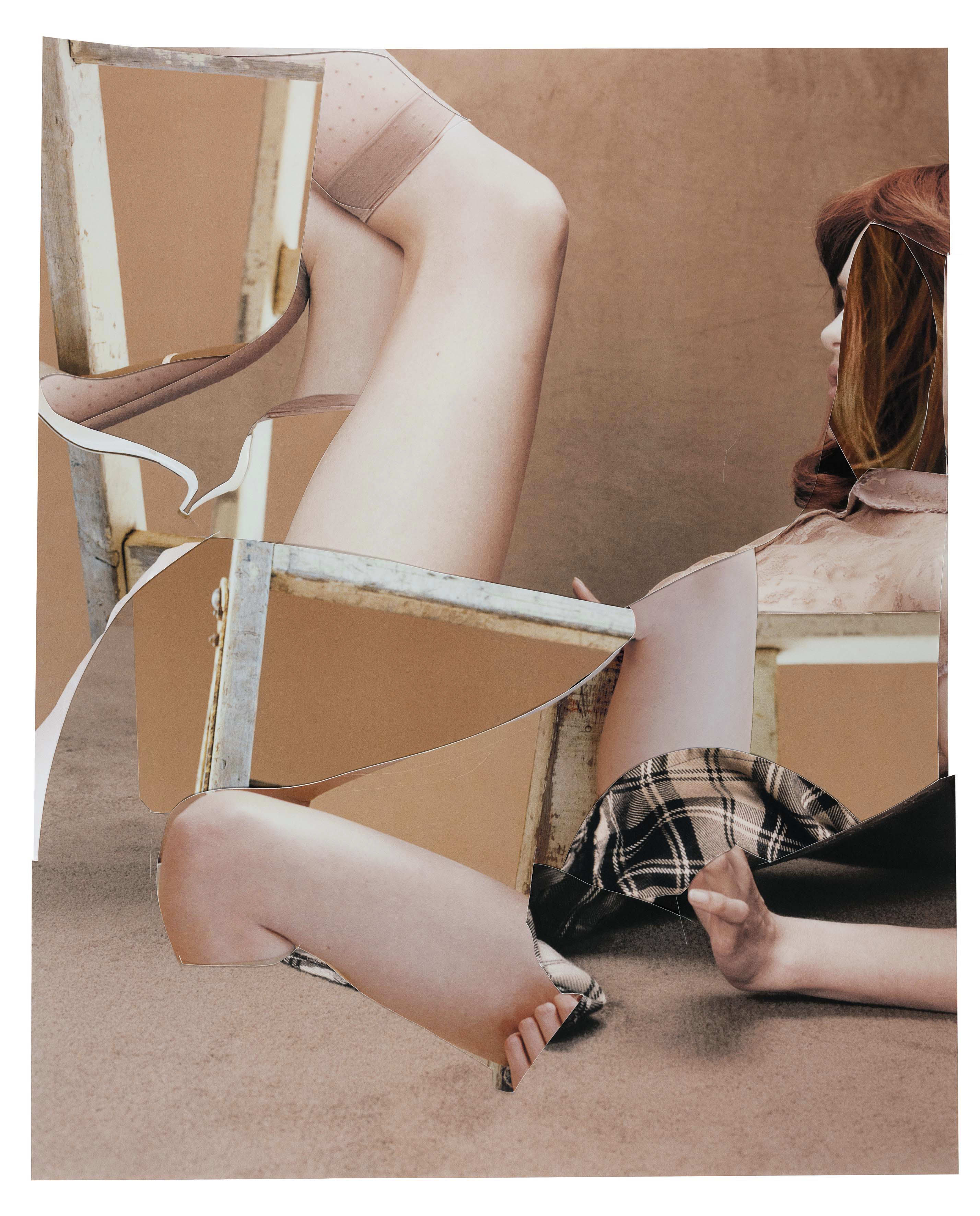
Broken Chair and Limbs, 2018 © KYoung / courtesy The Ravestijn Gallery
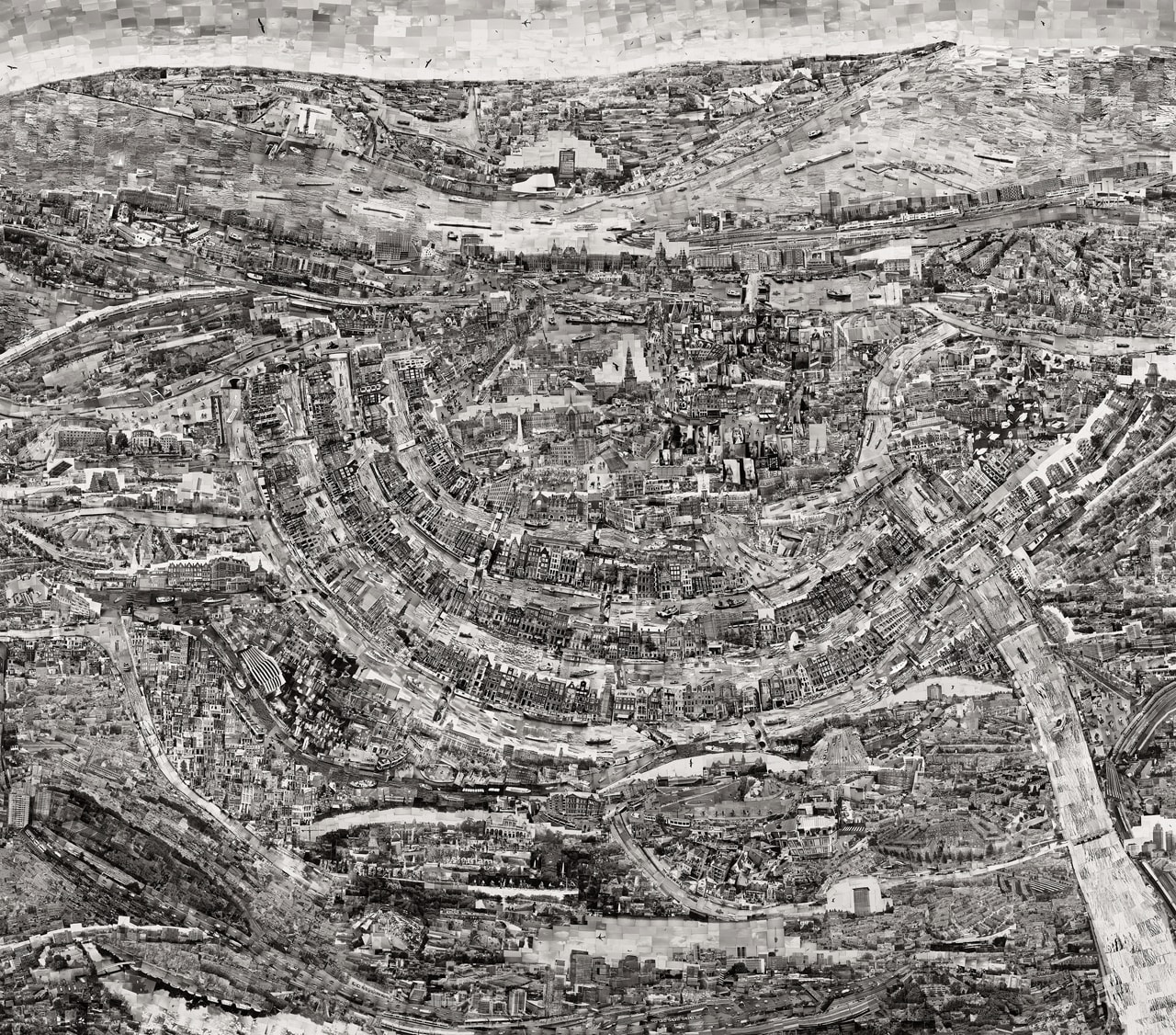
Diorama Map Amsterdam, 2014 © Sohei Nishino / courtesy The Ravestijn Gallery
Maps of other landscapes
Working with collage, sculptural allegories and theatrical staging of photography as a shared historical artefact, American Matt Lipps creates three-dimensional compositions of images and their imagery. Autonomous paper dolls, photographed again, reflecting on how they influence our idea of self and other, the worlds we inhabit and traverse. Their historical significance too, with conceptual, complex and strangely familiar photographs by Amsterdam-based artist Jasper de Beijer, using body casts, studio lighting, with hand-drawn, scanned, manipulated images. Japanese artist Sohei Nishino does something similar, with large prints of cityscapes that reimagine the cities he travels through and photographs for months. Diorama maps created with kilometres of film, printed and modified by hand, distorting the coordinates of collage, cartography and psychogeography. The Swiss duo (Jojakim) Cortis & (Adrian) Sonderegger, with Icons, recreate in the studio and by hand, with cotton, glue and plastic, some of the images that have contributed to changing the perspective on memory, perception of reality and documentation of truths, from Robert Capa's controversial The Falling Soldier to Hugh van Es's Fall of Saigon. The final shot, extended to the "making of" the work and their working methods, does not simply overcome the documentary aspect of photography. It questions it, as does German visual artist Michel Lamoller, with sculptures that layer the meaning of photography, object and image, along with the boundaries and directions they can take. Transforming photography that documents reality into three-dimensional objects of the real world.
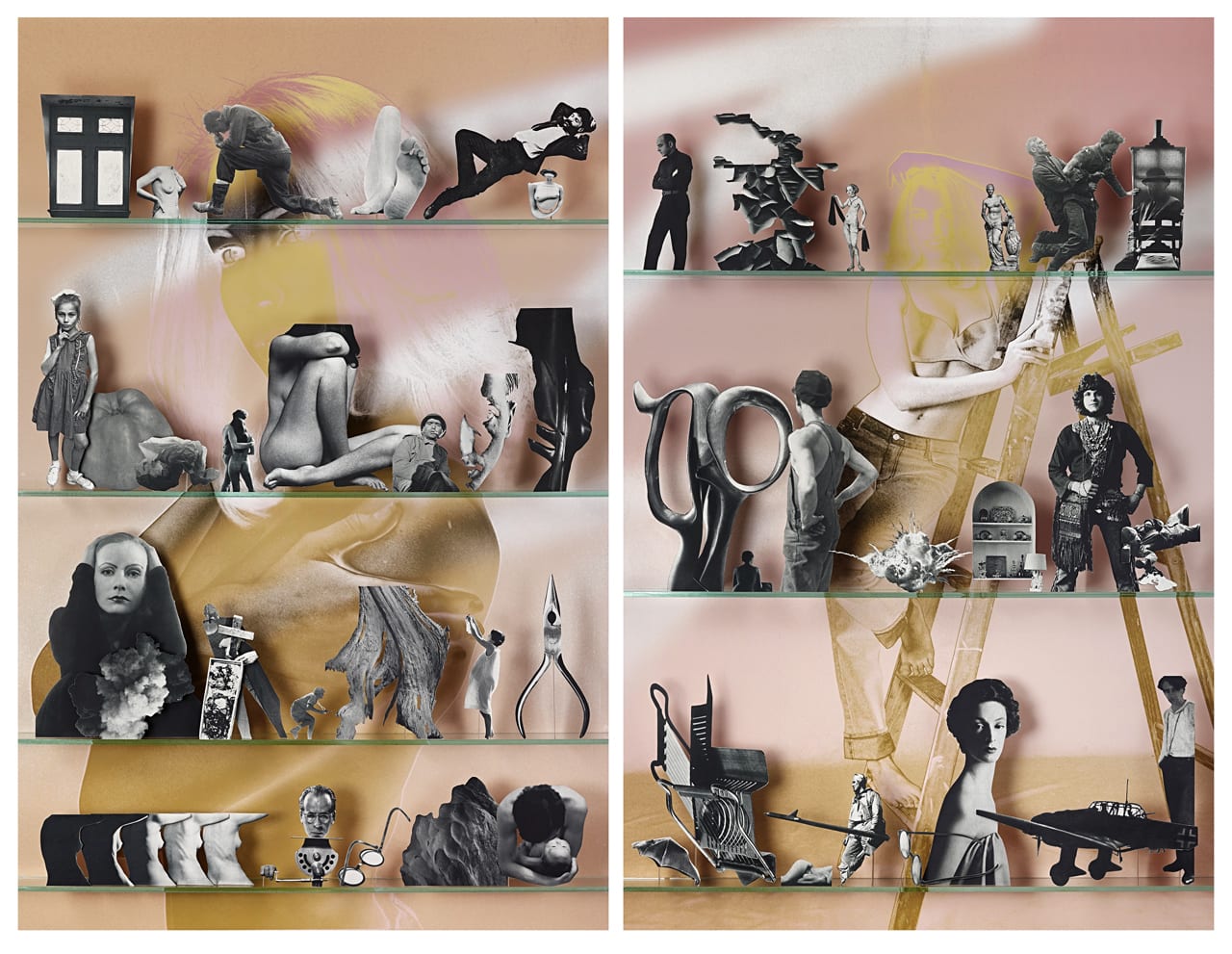
Themes, 2013 © Matt Lipps / courtesy The Ravestijn Gallery
Beyond collage and the potential of digital
None of them hides the process of hunting down the mysteries of the real world to unravel. The artisanal and playful approach of the Spaniard Jaime Hayon goes so far as to paint it on the body, as he has just done on the garments of the Zara capsule collection and so much design, photographing it with a Leica, before painting the giclée print (digital "inkjet" and high definition) with acrylic paint and Japanese charcoal ink. The Dutch artist duo Scheltens & Abbenes highlight this, combining Maurice Scheltens' skills as a photographer and Liesbeth Abbenes' skills as a tapestry maker with their creative and sentimental fellowship. By re-photographing images of flowers, cut out, meticulously arranged in a graphically two-dimensional way, they play with the idealised form and representation of flowers in art, together with the potential of photography, which they also exploit while working for large fashion and design companies. Another Dutch duo close-knit in art, life and breaking the mould, Inez (van Lamsweerde) & Vinoodh (Matadin), continue to experiment with techniques and approaches to digital image manipulation, having also used a precursor to Photoshop such as Paintbox for fashion. Overwhelming with advertising campaigns for companies such as Dior and Yves Saint Laurent and editorials for fashion magazines, videos for artists such as Björk and works of art that also question the characters and mechanisms of the star system. Journeys into the image of the image and its disturbing reality that may not bear a sublime resemblance to their LucyFer, but has much in common with the portraits of Dutch photographer and filmmaker Jacob Merkelbach, assembled with objects, furniture and stationery from the studio shared by (Anuschka) Blommers & (Niels) Schumm.
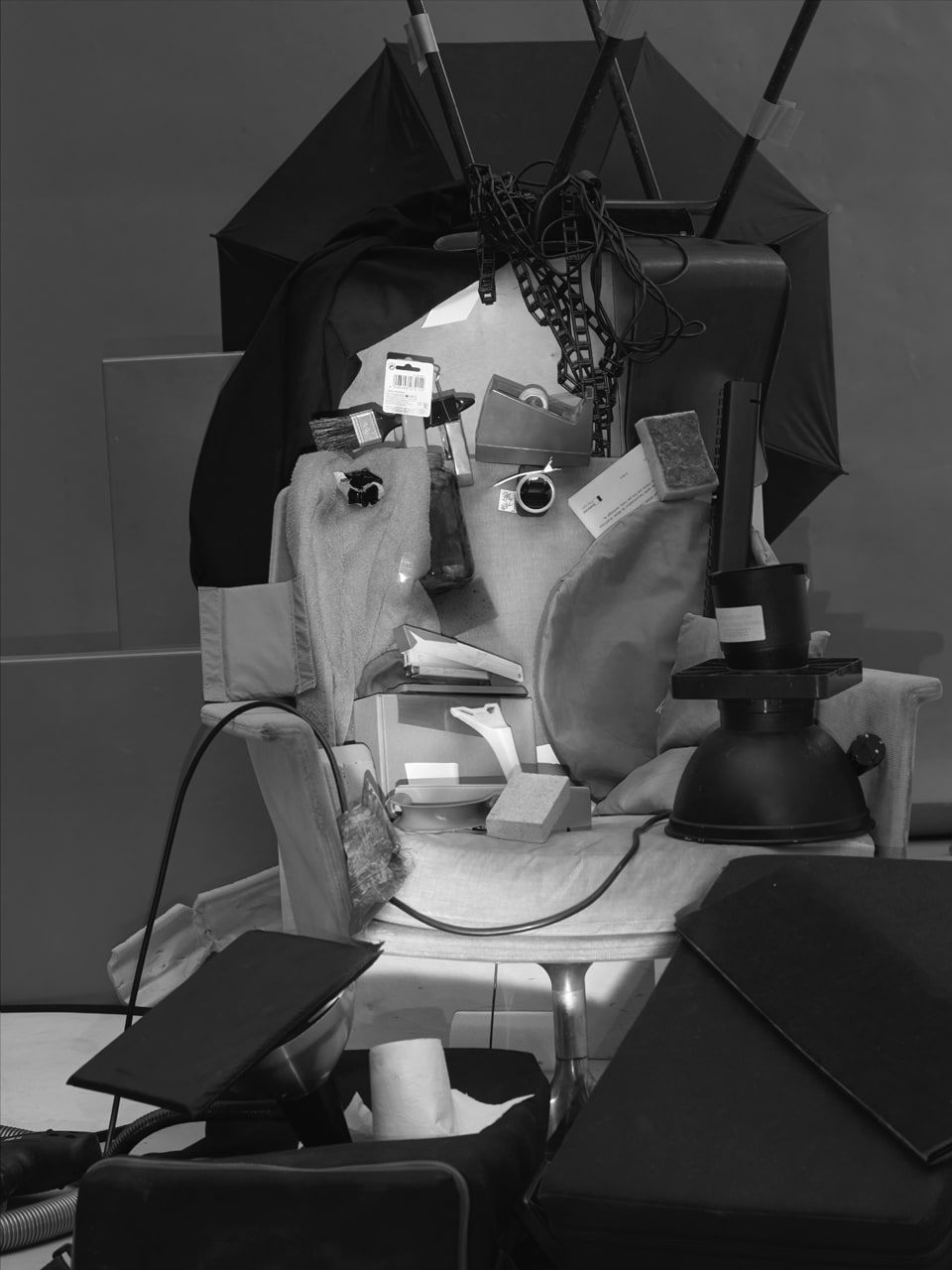
Merkelbach - Parapluhoofd, 2013 © Blommers & Schumm / courtesy The Ravestijn Gallery
Using tape for an eye, an umbrella for a hair or hat and the uncertainty that dominates everything else, along with photography that re-contextualises and destabilises, the Dutch photography duo question the status quo of photography, operating at the border it shares with art and any discipline that touches or embraces both. It also happens to the visual aesthetics of South African Nico Krijno, liberated from the algorithms of technology, modifying and sculpting found objects, staged, photographed and digitally reworked, to the point of dissolving the boundaries between real and virtual. To the anthology of the marvellous of biomorphic forms by a son of the Kingdom of the Netherlands and photographer of the homeland Koen Hauser, with the postmodern alchemy of Skulptura, triggered by connections and interactions with sculpture, haute couture, photography, mythology, animism and spirituality. To Simon Lehner's navigations of the subconscious, from Vienna to Foam Talent 2021, with sketches, renderings, archive images and photographs outlining the inexplicable.

Spiritus, 2019 © Koen Hauser / courtesy The Ravestijn Gallery
THE EXHIBITION
The Constructed Image
17 July - 4 September 2021
The Ravestijn Gallery
Westerdok 824
1013 BV Amsterdam
The Netherlands
Opening hours: Mon - Sat, 12.00-17.00 and by appointment
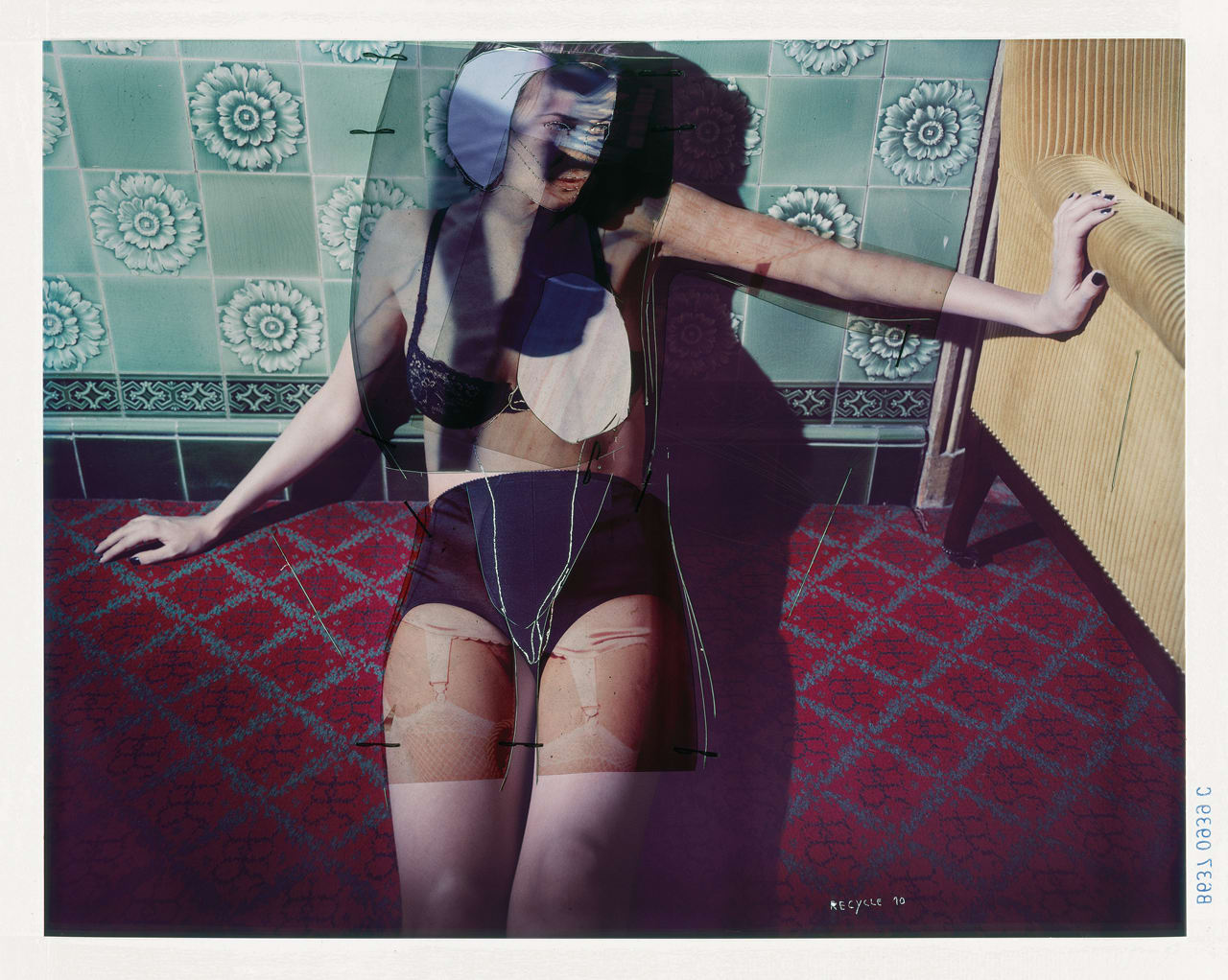
Recycle 10, 2014 © Jean-Francois Lepage / courtesy The Ravestijn Gallery
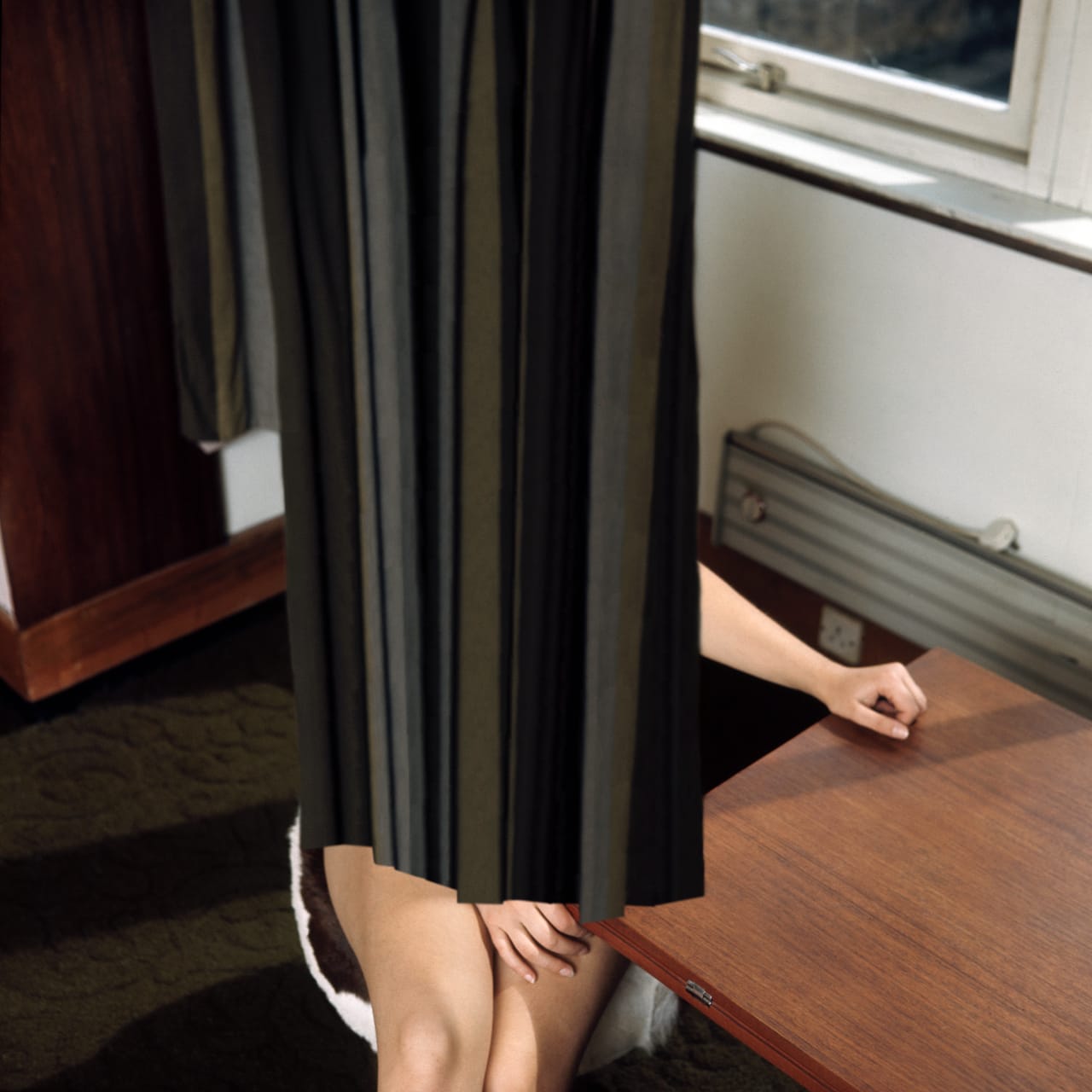
Drape (Colour I), 2011 © Eva Stenram / courtesy The Ravestijn Gallery










